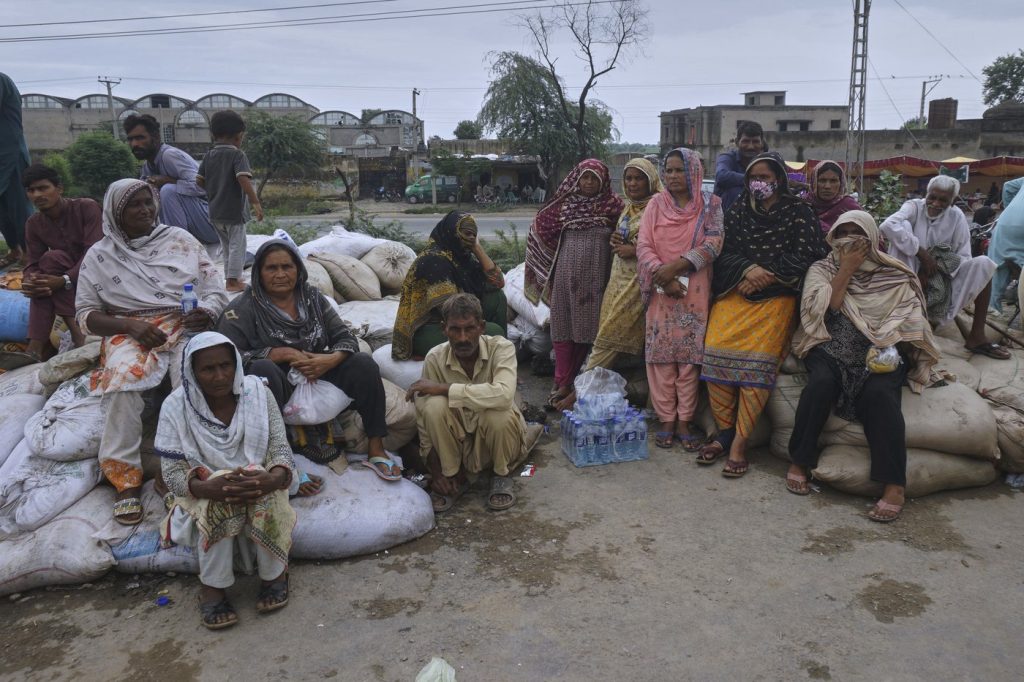Emergency workers in Punjab province, Pakistan, have been using drones to locate individuals stranded on rooftops due to severe flooding that has compelled more than 700,000 people to evacuate, as reported by officials on Monday. The flood conditions have been exacerbated by weeks of excessive rainfall and the release of significant water volumes from dams in neighboring India.
The Pakistan Meteorological Department has issued warnings of additional heavy rainfall across Punjab's flood-affected areas and other regions in the country. The overflow of rivers caused by these rains has resulted in low-lying regions being inundated.
In districts like Multan and Jhang, residents have been navigating through floodwaters, some of which reach depths of nearly 5 feet (1.5 meters), carrying their belongings to higher ground. Many families, after waiting for help, have had to make dangerous crossings through the water to reach safety, with numerous individuals remaining stranded.
Irfan Ali Kathia, the director general of the Punjab Disaster Management Authority, stated that over 700,000 evacuees have been rescued since the flooding began last week, along with the safe relocation of more than 500,000 farm animals. Kathia emphasized the unprecedented nature of the flooding and the state's efforts, utilizing advanced technology and resources to preserve lives.
The Punjab government has deployed drones in affected districts including Multan and Jhang as part of these efforts. Kathia noted that priority has been given to saving lives and ensuring a steady supply of essential goods for survivors. Significant flooding has impacted districts such as Narowal, Sialkot, and Kasur, resulting in the submergence of entire villages in areas like Jhang and Multan.
Displaced individuals, such as Haleema Bibi, 54, have expressed feelings of abandonment and devastation, stating, “We have been destroyed. Everything is gone in the flood.” She and her relatives are currently sheltering outdoors without tents or adequate food supplies. Another resident, Allah Ditta, a farmer from the same region, mentioned that although rescuers had offered help, it was insufficient and has left many in dire need of assistance.
Authorities have established over 1,000 relief camps, yet reports indicate that only about 36,550 out of more than 800,000 evacuees are housed in these facilities, with the majority remaining unaccounted for in terms of their immediate living conditions.
Evacuations have also unfolded in southern Sindh province, as Chief Minister Murad Ali Shah has raised concerns about a potential “super flood” of the Indus River should water levels exceed 900,000 cubic feet per second. The catastrophic flooding has been attributed to weeks of heavy monsoon rains, together with cross-border water releases from India, impacting multiple river systems including the Ravi, Chenab, and Sutlej.
India's prior notification to Pakistan regarding the water release marks a rare diplomatic exchange amid ongoing tensions, following a military crisis earlier this year. The province of Punjab, which houses approximately 150 million people and is the primary wheat-producing region of Pakistan, has reportedly experienced 33 flood-related deaths in the last ten days. This casualty rate, while concerning, is notably lower than during the catastrophic floods of 2022. However, extensive damage has occurred throughout the area.
Pakistan's weather authorities indicated that Punjab recorded an increase of 26.5% in monsoon rainfall this season compared to the same timeframe last year. Since late June, at least 854 people have lost their lives in rain-related incidents across the country. The ongoing monsoon season is projected to continue until the end of September.










